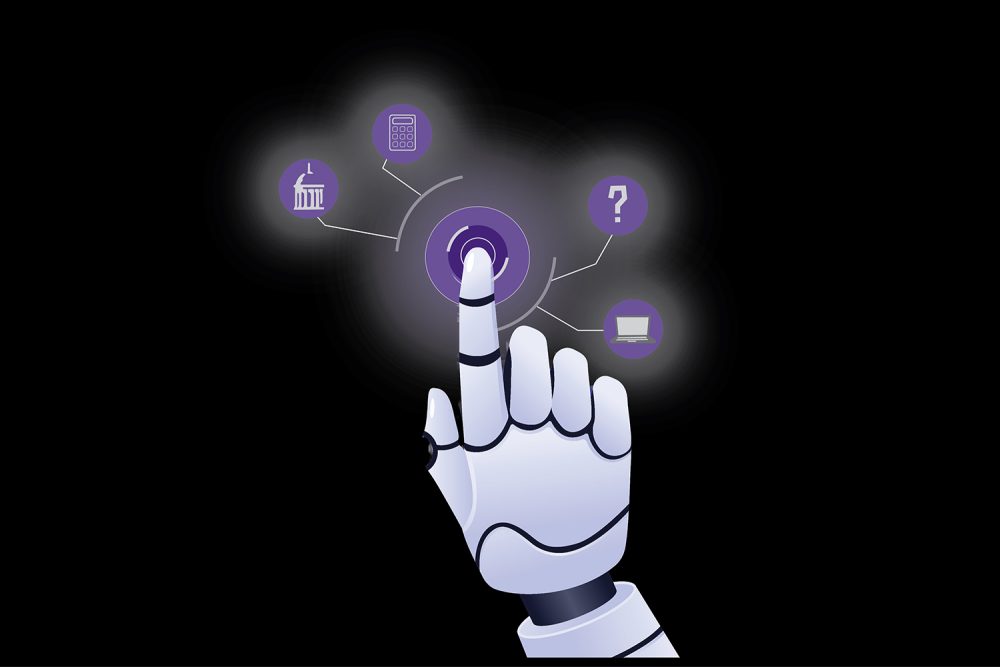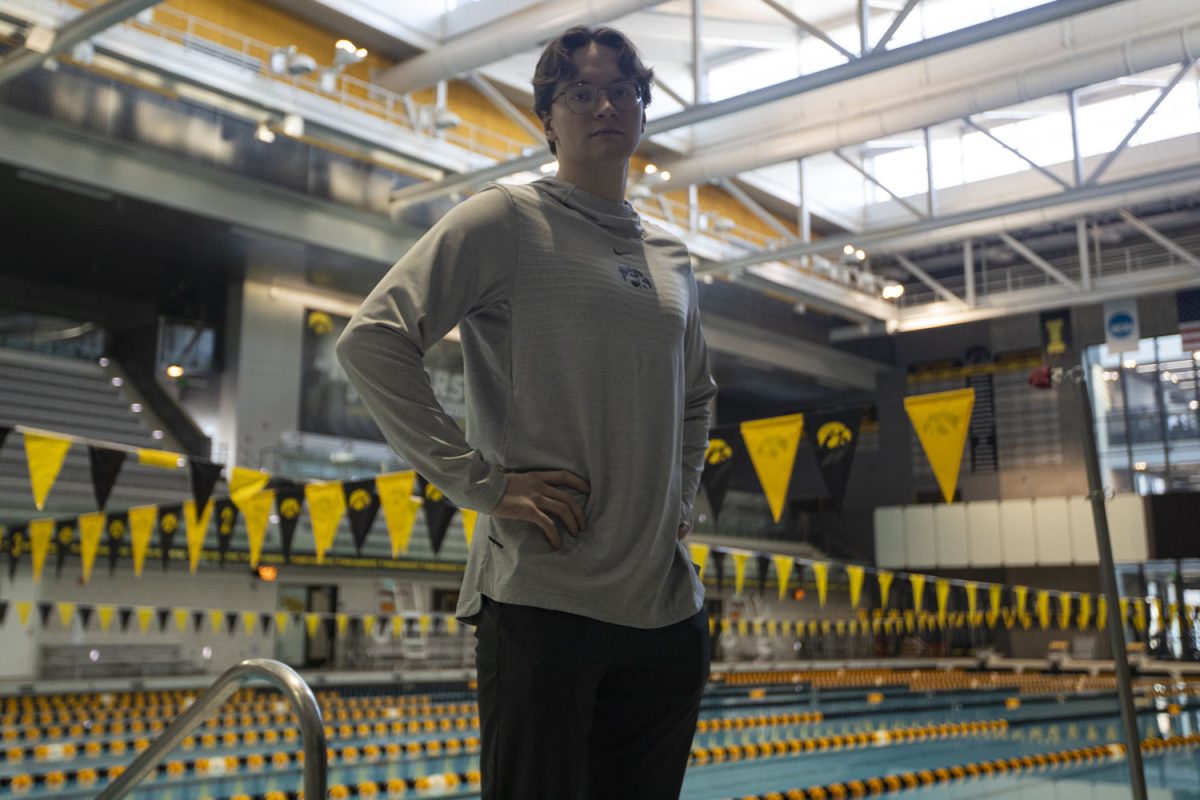For an hour and 15 minutes twice a week, University of Iowa students file into the Seamans Center to talk about ChatGPT, its uses, and related ethical concerns in the course “Generative AI Tools: ChatGPT and Beyond.”
Tyler Bell, an assistant professor in the UI College of Engineering, teaches the class.
“My approach, especially as an educator myself, is to treat tools like these as another tool in the toolbox,” Bell said. “There needs to be some guidelines, but [we should] encourage the use of these tools so that the students that come out of our programs can use them effectively.”
With the increased presence of artificial intelligence on college campuses, UI professors across areas of study are adding a new section to their syllabi to implement AI into the classroom.
ChatGPT, Chat Generative Pre-trained Transformer, is an AI chatbot that can produce extended written work with prompts.
Universities navigate AI guidance
When ChatGPT was released to the public in November 2022, the initial public reaction — at least at universities — was fear of using artificial intelligence to cheat.
Those fears were found to have some merit. In February, The Daily Iowan spoke with an anonymous UI student who used ChatGPT to generate an essay that received an A grade.
The UI has given faculty and students some guidance with AI. The UI released tips on AI usage for faculty on Aug. 7 and added a clause about AI into the university’s code of student life.
The Office of the Executive Vice President and Provost wrote in a statement to the DI that the university is monitoring the impact of AI on academics.
The DI requested an in-person interview with UI Provost Kevin Kregel, but was denied.
“Our core mission remains providing a transformational educational experience that prepares our students for success, and a key part of our strategy is engaging students in ongoing conversations about AI and academic integrity to ensure they understand how to leverage AI tools appropriately,” the provost office wrote in a statement.
Other universities in the Big Ten are treating AI similarly to the UI’s approach. Ohio State University released considerations for teaching with AI and updated its code of conduct to restrict students from using AI to complete course assignments for classes unless faculty authorizes its use.
Russell Chun, associate professor at Hofstra University’s Lawrence Herbert School of Communication in New York, said it is difficult to create one policy to regulate AI for an entire university because every discipline is different. Chun wrote a column for the American Association of University Professors detailing AI’s importance in education.
“I think every instructor and professor is going to be different,” he said. “Some may want to use it in the classes, some may say no. There’s the concept of academic freedom. You can’t tell a professor how to teach a course and I think there are some limits to that.”
As a professor of journalism, media studies, and public relations, Chun said AI is another tool he wants to implement in his classroom.
“I think everyone is still kind of wondering how useful AI can be and how we can use it for learning as well,” Chun said.
A QuickPoll by Educase from February revealed that 49 percent of faculty at the surveyed institutions are optimistic about AI, while 28 percent are pessimistic and 21 percent are neutral on the subject.
UI Faculty Senate President Edward Gillan wrote in an email to the DI that the challenges and opportunities with AI technology are “on the radar” of many UI faculty. He wrote that the Faculty Senate has not formally endorsed a unified front, but plans to discuss the topic this fall.
Intentional AI in the classroom
Pamela Bourjaily, UI Tippie College of Business associate professor of accounting instruction, implemented AI into some of her courses last spring. She said when she heard about ChatGPT, she thought it would be a game changer for business writing.
She incorporated ChatGPT into a writing assignment and gave students the freedom to generate memos and revise them.
“Over the summer, I looked at the results, and I learned that the students who performed the highest on that assignment did not use ChatGPT — they did their own writing,” Bourjaily said.
This fall, Bourjaily will continue to teach students about AI. She said students will learn a “recipe” on how to generate relevant content from ChatGPT.
“I will have students focusing on the process of developing, say, a plan for how they’re going to get this content, and then also developing a plan for revising the content once they get that content,” she said.
A common analogy to better understand using ChatGPT is drawing parallels to the calculator.
As described by Bell, students in elementary school still learn the basic processes of arithmetic despite the existence of calculators because those tools are later built upon to understand ideas in math that cannot be solved using a calculator.
Bell said using ChatGPT does not erase the foundations that are already being learned, nor does it mean these foundational educational ideas will stop being taught. He sees the program as a way to enhance these pre-existing skills.
Bourjaily said educators have an obligation to make sure students have some training in AI.
“We can talk about the ethical use of not putting proprietary information into one of these so we can help instruct on the ethics of using this tool properly,” Bourjaily said.
The limits of AI
Despite the whim and wonder surrounding ChatGPT, there is a limit to its abilities.
Bell said generative AI is not advanced enough in its current state to produce creative works — like poetry or music — independently. With the UI uniquely situated and colloquially dubbed “The Writing School,” this distinction is key.
“I don’t think that we are at the stage today where we can just take that and run with it,” Bell said. “I don’t think the tools are replacing anybody anytime soon in the creative endeavors.”
However, Bell said this does not mean AI is useless when it comes to assisting creative works.
Bell said in his personal experience, he has used ChatGPT to generate lyrics for rap songs, but he said the generative AI was not able to take cadence, rhythm, or beat into play — which is where Bell filled in.
“I do think these tools are highly capable at helping the human essence shine,” Bell said.







